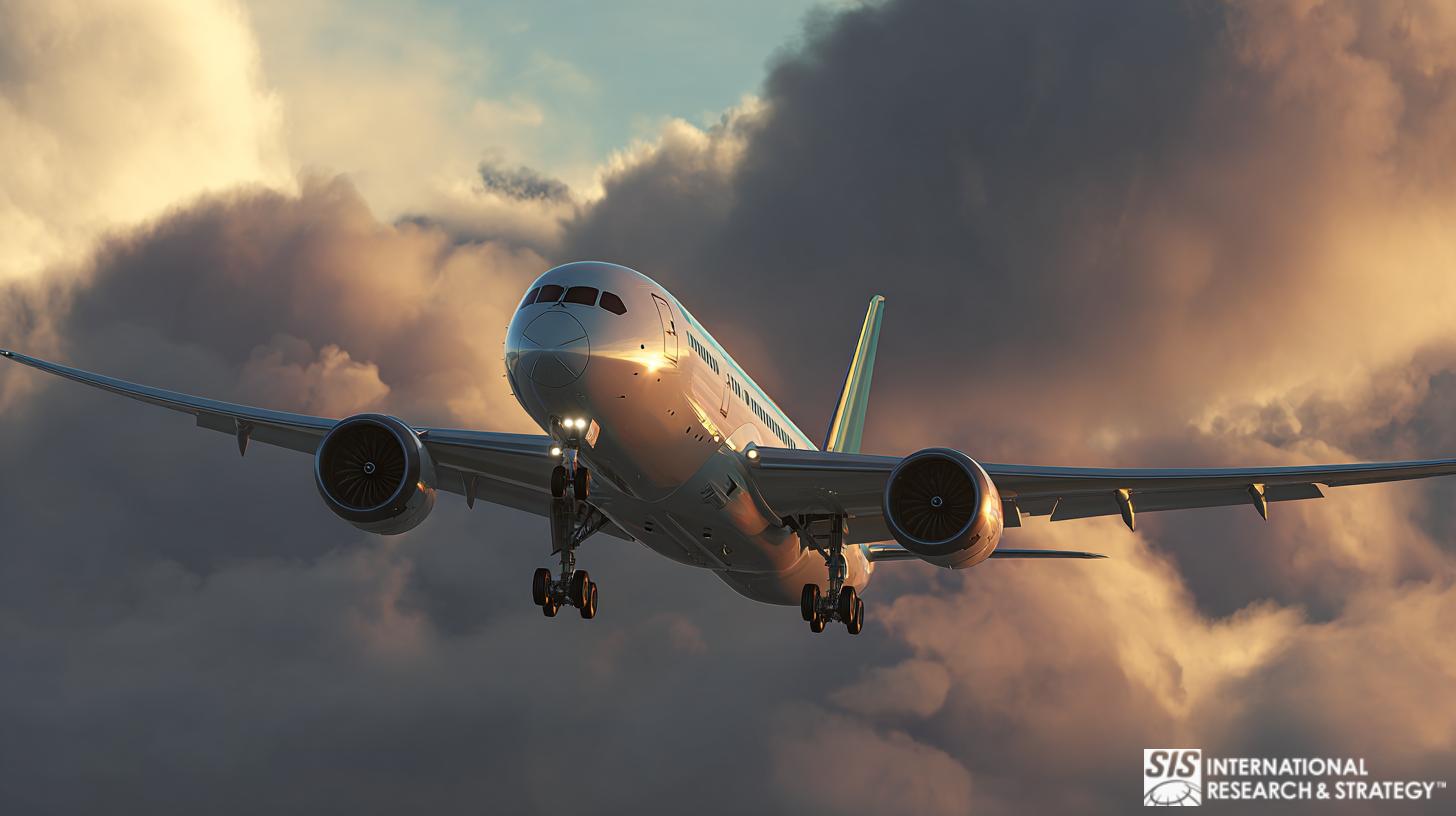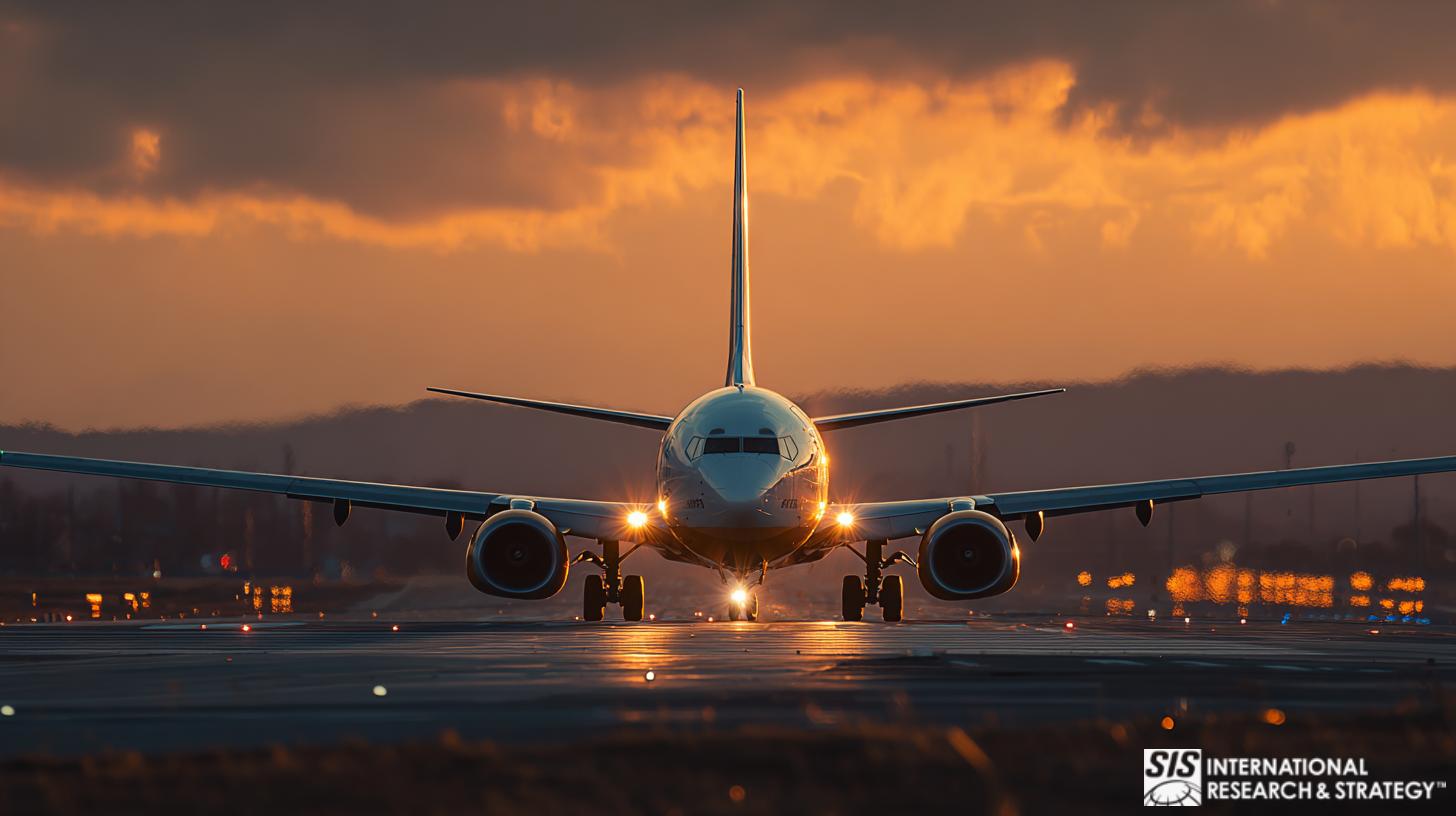
The aeronautics industry is a main contributor to national security, commerce, and transportation. It is considered as a technology driver that leads to spin-offs of advanced technology products and comprised of three major sectors: airframe, engine, and equipment.
The market is composed of civil aeronautics of aircraft used for domestic commerce and civilian air transport, and military aeronautics includes air arms for the military aviation of countries.
Marché aérospatial aux États-Unis
Since World War II, U.S. aircraft, engines, and parts have dominated the domestic and foreign markets for subsonic transports, general aviation, commuter, and military aircraft. US technology and products are also the drivers for the development of global transportation infrastructure like airports and air traffic management systems.
Actuellement, l'industrie aéronautique est le plus grand contributeur industriel positif à la balance commerciale américaine, joue un rôle vital dans le maintien de la sécurité et de la commodité du transport aérien à travers le monde et apporte d'importantes contributions à la défense des intérêts américains, étant le secteur le plus aérien. régions isolées du monde.

La société Boeing
The Boeing Company is one of the largest manufacturers of commercial jetliners and military aircraft. It designs and manufactures rotorcraft, electronic and defense systems, missiles, satellites, launch vehicles, and advanced information and communication systems, and operates Space Shuttle and International Space Station for NASA, and provides military and commercial airline support services. It operates in more than 90 countries around the world and is one of the largest U.S. exporters in terms of sales.
Boeing is headquartered in Chicago and employs more than 160,000 people across the United States and in 70 countries. Currently, it is expanding product lines and services developing more commercial airplanes, military platforms, defense systems, and the war fighter through network-centric operations; creating advanced technology solutions that reach across business units; e-enabling airplanes and providing connectivity on moving platforms; and arranging financing solutions for our customers.
Le marché aérospatial européen
The region is presently struggling to keep pace with the strong increase in mobility and demand. However, the region is the main competitor of the US in terms of air travel over medium and long-haul routes. EU states are now increasing their funding to support and fund research initiatives to meet market demands and grab potential opportunities in the industry.
Airbus SAS
Airbus est l'un des principaux constructeurs aéronautiques proposant des gammes de produits telles que l'avion de ligne monocouloir A318 de 100 places jusqu'à l'A380 de 525 places, le plus grand avion de ligne civil en service.
Airbus s'est développé dans le secteur des avions de transport militaire avec l'avion de transport militaire multirôle A400M produit sous la direction de la société Airbus Military, remplaçant les flottes vieillissantes de C-130 Hercules et de C-160 Transalls à partir de 2009. En outre, des avions ravitailleurs pour en -les missions de ravitaillement en vol et de transport sont disponibles dans des variantes d'avions dérivées de l'A310 et de l'A330.
Les technologies émergentes
Les domaines de recherche récents en aéronautique comprennent la nanotechnologie, les tests et évaluations de développement, la guerre réseaucentrique, les systèmes intelligents et le transport aérien environnemental.
Systèmes d’avions et d’équipements à énergie optimisée
Air craft technologies are related to the design and integration of energy-consuming Aircraft Equipment Systems (AES). These systems are located under the floor, inside wings, and behind panels, essentially ensuring performance, safety, and controllability.
Les nouvelles configurations d'avions font progresser les composants disponibles et l'intégration de ces systèmes pour introduire des possibilités d'une plus grande efficacité dans les domaines suivants :
- Contrôle environnemental et tous les aspects de la gestion thermique
- Protection contre la glace et la pluie pour l'actionnement des commandes de vol
- Train d'atterrissage et freinage
- Electrical, hydraulic, and pneumatic generation and distribution
- Production d’électricité auxiliaire et de secours
- Système de carburant d'avion
- Assistance moteur
- Éclairage, cabine et eau/déchets
Nanotechnologie
Les domaines de recherche actifs dans l'industrie aéronautique comprennent les nanodispositifs et systèmes, la nanoélectronique, la nanofabrication, les nanomatériaux, les nanocapteurs et les aspects environnementaux, sanitaires et sécuritaires de la nanotechnologie. Les activités de recherche actuelles incluent la capacité de combiner plusieurs disciplines « nano » pour créer de nouvelles applications synergiques de la nanotechnologie.
L'Initiative nationale américaine sur les nanotechnologies en tant que domaine dans lequel la nanotechnologie a le potentiel de permettre une multitude d'innovations, en particulier dans les matériaux/structures et les bio-nanomatériaux intelligents dans l'aéronautique.
Transport aérien environnemental
L'initiative technologique conjointe Clean Sky rassemblera les acteurs européens de la R&D pour le développement de conceptions, de moteurs et de systèmes de véhicules aériens écologiques afin de minimiser l'impact environnemental des futurs systèmes de transport aérien.
Technologies will directly aim for the reduction of the amount of carbon dioxide (CO2) emitted by air transport, cutting specific emissions of nitrogen oxides (NOx) by 80% and decreasing noise levels. The targets reflect the Ultra Green High Level Target Concepts developed by the Advisory Council for Aeronautical Research in Europe (ACARE). Other focus areas include the reduction of soot, water vapour, and particulate emissions through alternative fuels; aircraft engine configurations, intelligent low-weight structures, improved aerodynamic efficiency, airport operations, and air traffic management as well as manufacturing and recycling processes.
Le marché aérospatial asiatique
Relative to Europe and the Americas, Asia’s security situation is increasingly fluid. Emerging superpowers, weapons proliferation and nuclear tensions are key movements in the defense industry.
Increased nuclearization among Emerging Markets, particularly China, India, Pakistan, and Iran, has created geopolitical tensions and new demands for defense offerings. Meanwhile, political calls are growing in developed nations for collaborative efforts toward reduced nuclearization.
Conversely, weapons imports have grown dramatically in Southeast Asia over the past few years. Malaysia, Singapore and Indonesia are leading the growth with triple and double-digit growth in weapons imports.
In addition, defense budgets in Asia are on the rise. The rise is being led by regional tensions and a desire for more sophisticated technologies. Recently China has publicly announced its advanced capabilities to destroy ballistic missiles and demonstrated its defense capabilities in space.
Analysts expect increased demand from Asian governments. Asian companies may continue collaboration with established defense companies primarily in developed nations for cutting-edge weapons development.
Western aerospace and defense giants have emphasized their offerings of unmanned systems, aircraft, energy systems and cyber technology to, what industry giants consider one of their most important markets. While leadership in the defense industry is led by developed nations, industry observers are increasingly curious when Asia will be able to take a greater role in developing weaponry on a larger, more self-sufficient scale.
Problèmes de l'industrie
Sécurité et qualité de vie
September 11, 2001 has shown the vulnerability of the air transportation system and the need for improved security. The long-term trend of growing numbers of commercial air operations demands a further reduction in the currently low rate of air transport accidents. Aviation safety and security pose numerous challenges to security personnel, operators, and aircraft designers. The public and aircrews must be protected both in the air and on the ground from danger and injury.
la main d'oeuvre
A serious problem facing the U.S. aeronautics industry is attracting, educating, and retaining the next generation of aeronautical engineers. The aerospace workforce is aging, and a significant number of people are nearing retirement.
L'âge moyen des ouvriers de production est de 44 ans dans le secteur commercial, de 53 ans dans le secteur de la défense et de 51 ans à la NASA. En outre, la proportion de travailleurs âgés de 30 ans ou moins a chuté de près des deux tiers, passant de 18 pour cent en 1987 à 6,4 pour cent en 1999. On s’inquiète de plus en plus du fait que le nombre actuel d’étudiants dans le « pipeline » éducatif n’est pas suffisant pour répondre aux besoins futurs de l’industrie aéronautique.

